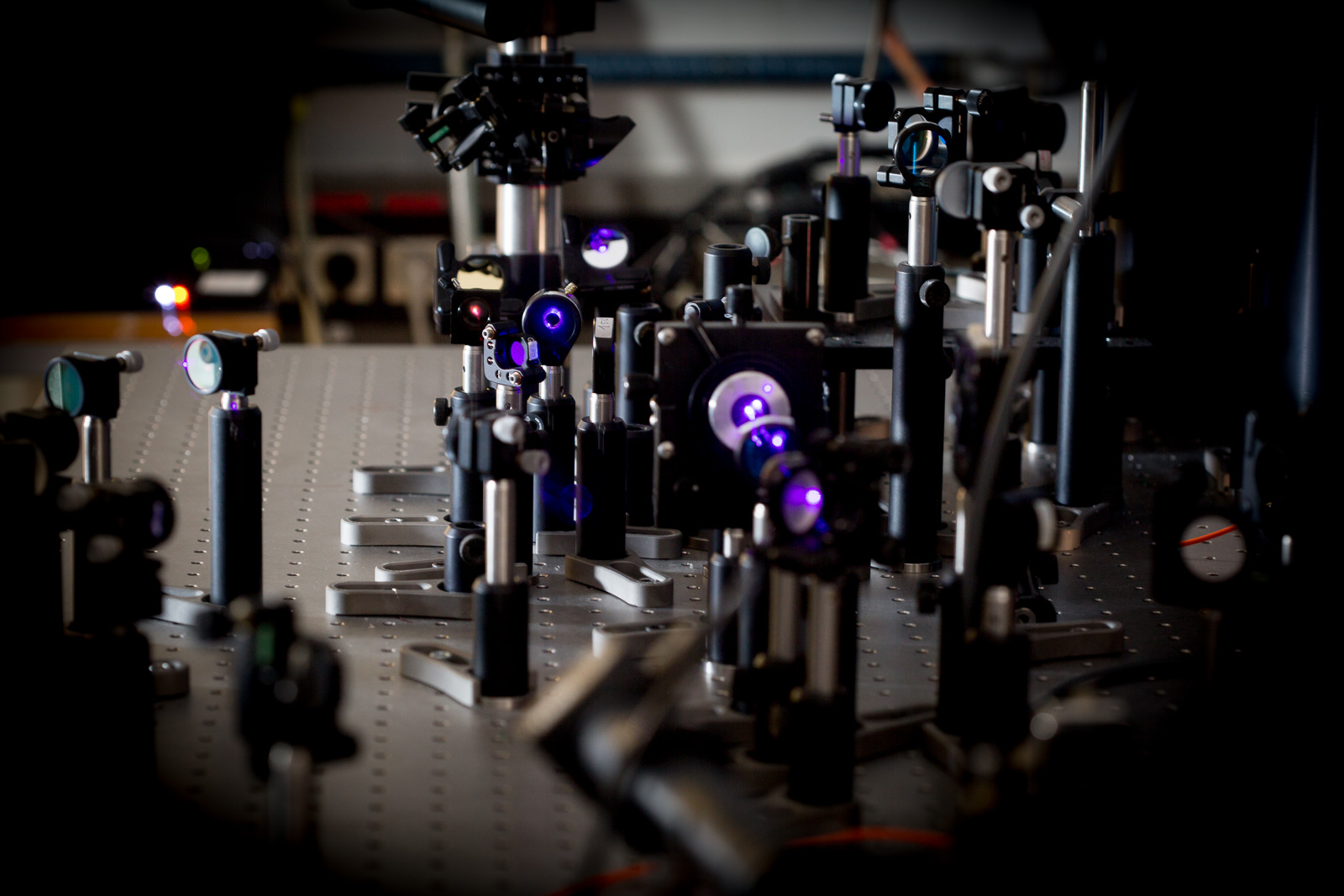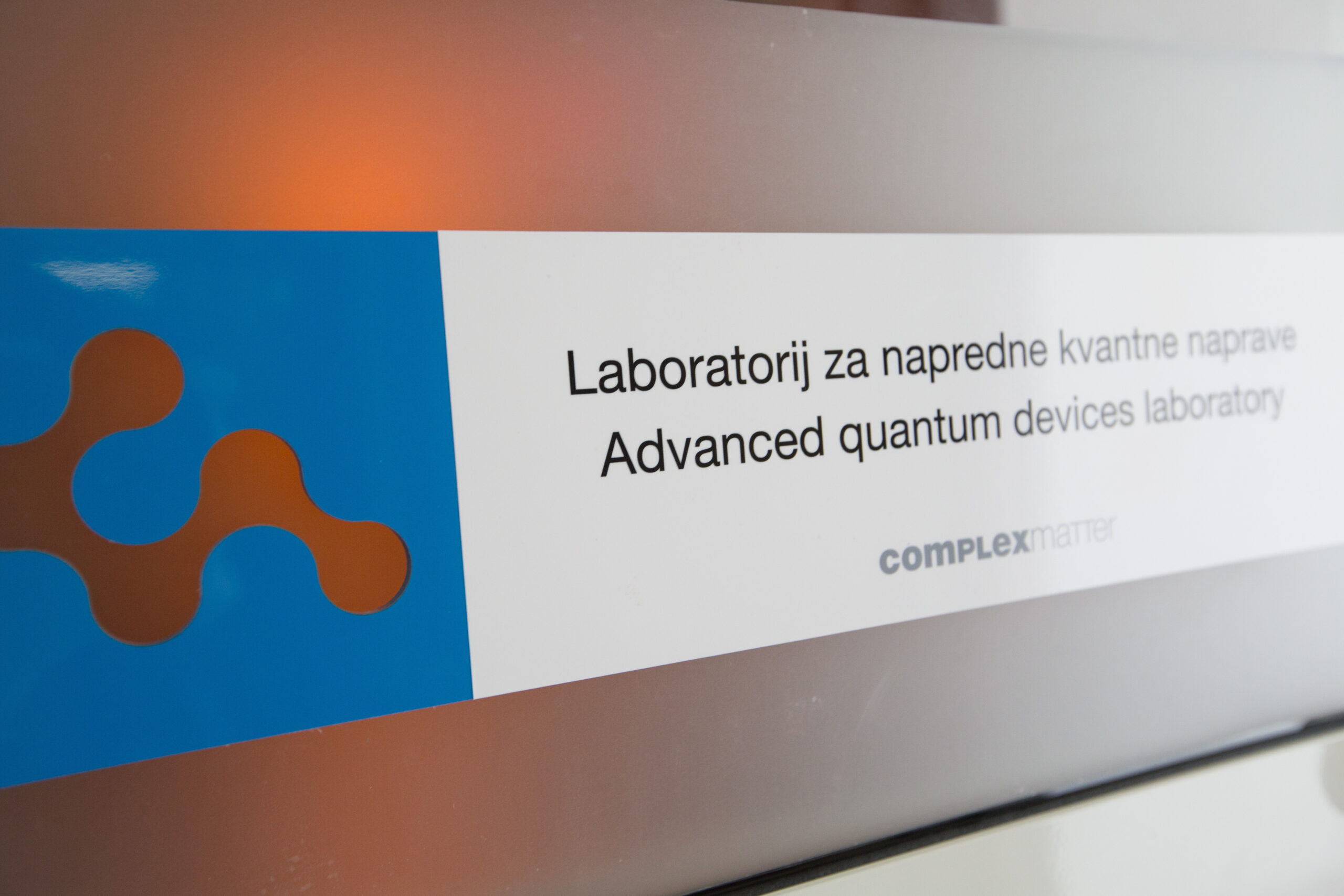The lab offers a complete set of setups for the investigation of ultrafast processes in solid systems on time scales down to a few femtoseconds. Various probes ranging from THz, IR, and optical up to extreme UV energies are available. Most of the setups can be operated in transmission and reflection geometries. Optical cryostats provide access to temperatures ranging from 1.5 K up to 350 K.
Location: Room C 210
Contact person: Tomaz Mertelj
tel: +386 1 477 3313
email: tomaz.mertelj@ijs.si
Optical pump-probe and multi-pulse spectroscopy
This extremely low noise (~1E-7) is typically used for quick sample characterization. The pump and the probe beams can be set either to 800 nm or 400 nm. The setup is equipped with a helium-flow cryostat (temperature range 4.2-350 K; transmission and reflection geometry; terminals for electrical connections to the sample).
Additionally to the standard pump-probe, a three-pulse configuration is available.
Broadband probe time-resolved spectroscopy
The setup operates in a standard pump-probe configuration. Its unique property is the broadband “white light” probe, which spans from 400-750 nm. The in-house-built array detector allows for parallel acquisition of multiple wavelengths with a 64-channel digital lock-in detector.
Few-fs pump-probe spectroscopy
The pump-probe setup uses 8-fs pulses from Ti:sapphire oscillator to provide extreme time resolution. Liquid helium flow cryostat cryostat can be used slightly compromising time resolution.
Magneto-optical pump-probe spectroscopy
Two electromagnets are available for time-resolved magneto-optical experiments. In combination with helium flow cryostat, a magnetic field of up to 2T is achievable. Various geometries are available magneto-optical Kerr and Faraday spectroscopy. Magnetic fields of up to 7T and sample temperature down to 1.5K are available in combination with Nanocenter’s superconducting magnet.
Time-resolved Resonant Extreme UV Polarimetry
The EUV beamline is based on the high harmonic generation and covers the spectral range of 30-100 eV. The custom-built polarimetry detector works in a rotating analyzer configuration, providing complete information on the polarization state of the EUV light, reflected off the sample. In-plane and out-of-plane magnetic fields of up to 1.5 T can be applied for measurements of magnetically-ordered samples at room temperature or in combination with helium flow cryostat.
Time domain pump-probe THz spectrometer
The setup is capable of measuring the amplitude transmissivity in the frequency region 200Ghz-2.5 THz. In the pump-probe mode the time evolution of the amplitude transmissivity after excitation with an optical pump pulse on a few picosecond timescale is accessible. Maximum available excitation fluence at the sample is ~10 uJ/cm^2 with the photon energy 1.5 eV.

Optical second harmonic generation
The incident radiation are amplified light pulses originating from the Coherent-Mira Ti:Sapphire laser system (100 fs long, 2 microjoules per pulse at 800 nm).
Second harmonic radiation generated in direction of specular reflection is detected by a photon counting system synchronized with the laser amplification unit. Growth and structure of thin surface layers adsorbed on various kinds of solid substrates can be probed in-situ during deposition from the vapour or liquid phase.

